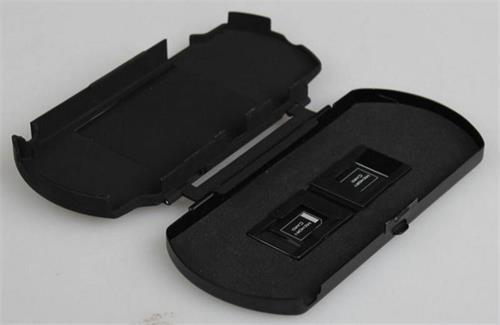Rapid prototyping technology has evolved from being an alternative for tooling to an option to create fully functional components or products given the types of resin that new printers are able to handle. The new builds can mimic the features and traits of any device created with an assembly line in a matter of hours. This is upping the ante and a way to show the reach of this tech.
The ongoing developments in the 3D printing market are kept continuous by quite a few players who keep doing their best to outdo their competitors. That’s why the level of sophistication in this field is moving so fast. Developers are moving forward and manufacturing products beyond mechanical components. A lot of electromechanical products are done using these methods as well; the best part is the use of current tooling methods to create a fully functional prototype from ground zero.

rapid prototyping, *picture from teamrapidtooling.com
Technology That Demands Ongoing Development
Research certainly seems to be focused on the creation of materials that prove to be manageable enough to be used in additive techniques. The possibilities so far seem to be endless, with 3D printers now being able to handle sturdier materials such as metal. We seem to be moving forward to the day when we can actually print an electric circuit using rapid prototyping China technology. The current issue that is being solved is the way to make conductive electrodes surfaces and print them as an integrated piece instead, thus bypassing the standard assembly required.
The ongoing need for 3D printing technology for manufacturing products is deemed essential in the current trends of development of our industrialized world. It can be quite hard to list the number of areas and markets where the tech is needed. The incorporation of new developments, as well as interactive tools for design, is something that happens at rates that weren’t even viable just five years ago. If there is something that hasn’t been tackled by a developer, they sure are eager to jump at the chance of doing so.
Companies Looking Beyond the Scope of Profits
You may be wondering why this willingness to go even further in a research field that seems to be very complicated even for project developers. The answer is quite simple: All these new advancements in the market will bring these companies more money. Don’t take it wrong, many of the companies working on these discoveries have a very humane side to them, but the fact remains that they are business looking to make a profit. Engineers and designers are out to make the world an easier place to live in with their creations, but their applied sciences are created to cover demand in various growing markets.
Every time one of these companies come across a breakthrough discovery, they disrupt a market that keeps evolving with each new development. Is almost similar to a no-holds-barred fight where the one winning for being serviced is the customer. The lasting effect is seen in more complex communicational devices, handier smart tech and medical prostheses that can mimic the use of a lost limb. All this work is quickly improved as soon as it is introduced to the market, with each brand putting their own take of customized products to cover the needs of their clients.
Current Developments Being Tried and Tested
Let’s take a look at one of the functional products already successful using 3D printing technology: electromagnetic speakers with a development based on the principles of electrostatic sound reproduction. The groundwork for the tech itself was first conceived way back in 1930. The engineering done on a 3D printed plaque is allowing one of the oldest sound technology to make a comeback supported by electronics while offering an enhanced level of sound quality that is only used on high-performance audio systems.
The technology can also be applied to the creation of new earpieces for the impaired using the basic principles that make a loudspeaker work. The integration of technology is one step away from being perfect because of the need to write the proper code into the piece that is powered by an outside source. Such a device could be considered a transducer since it helps to convert electric signals into audible waves. The technical implications are a bit too complicated for these lines, but it’s something so good that the only setbacks on such a display of tech would be the means to have it function at all moments.
These developments are just an opening to a near future, where 3D printers will be capable of creating electrical plaques that will part of all our appliances. For companies working on China rapid prototyping is just the beginning of a long road of exploration that will demand funds, but will also grant a great deal of benefits to every user in the world.
